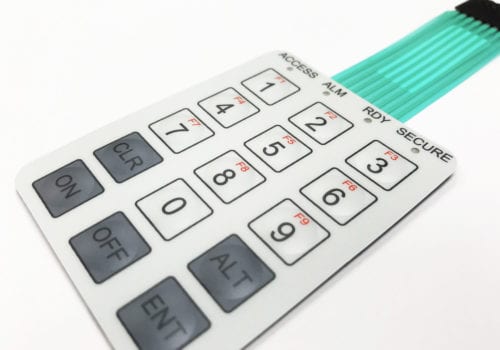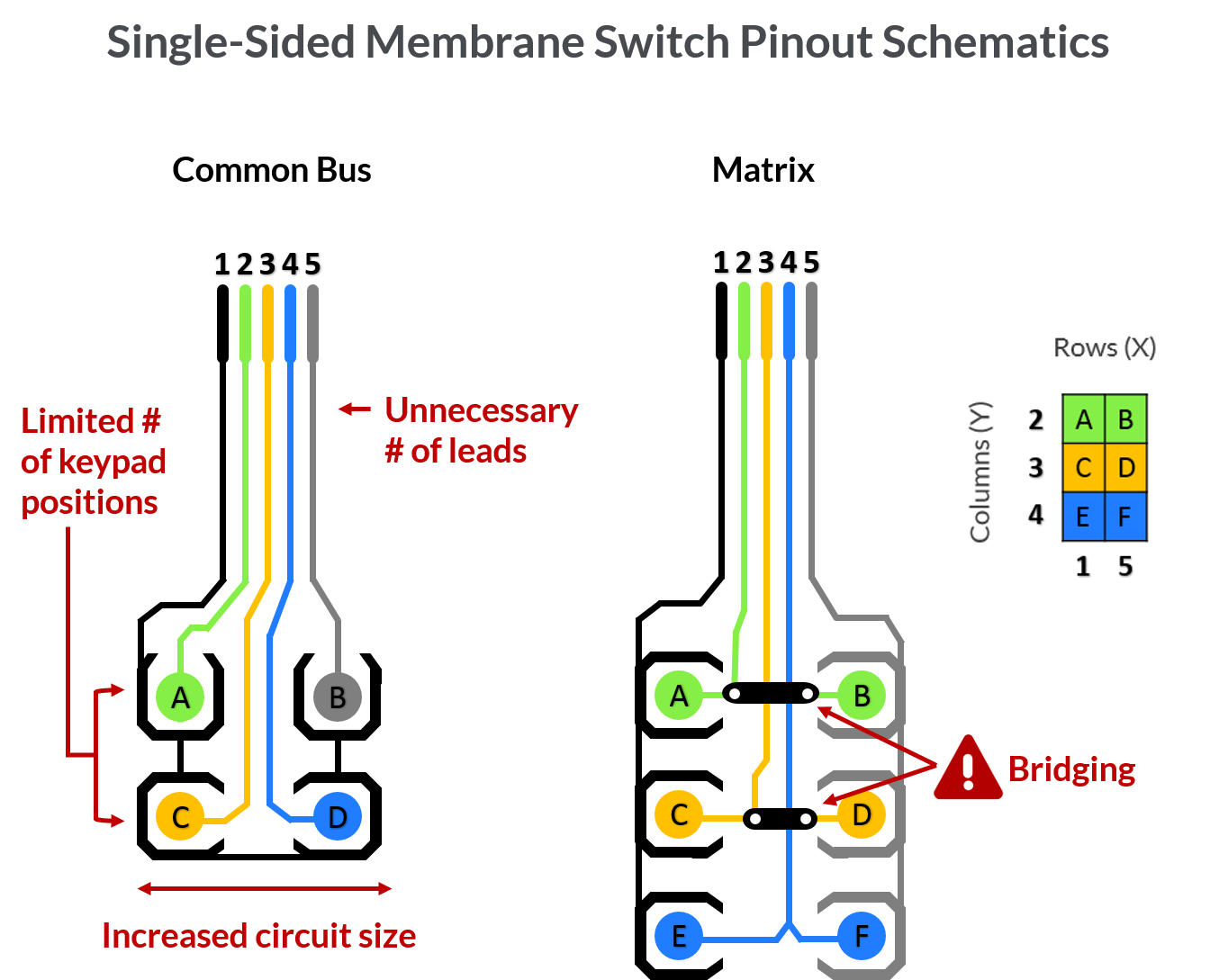Check Out the Advanced Layouts and Modification Options for Membrane Switches
Check Out the Advanced Layouts and Modification Options for Membrane Switches
Blog Article
Membrane Layer Switches Explained: A Comprehensive Overview to Their Benefits
Membrane layer switches stand for a sophisticated and flexible service for developing user interfaces across a range of sectors. As sectors progressively look for dependable and reliable control interfaces, comprehending the particular advantages and applications of membrane switches over becomes vital.
What Are Membrane Layer Buttons?

When stress is related to the membrane layer button, the layers make get in touch with, finishing an electric circuit. This simple device enables a vast array of applications, from customer electronic devices to industrial machinery. Membrane buttons are typically developed to be immune and water resistant to dirt and pollutants, making them ideal for environments where durability is crucial.
Furthermore, the adaptability of the materials used in membrane layer changes assists in innovative designs that can adhere to numerous shapes and dimensions. This adaptability contributes to their popularity in diverse fields, consisting of medical devices, vehicle controls, and home devices. In general, membrane layer switches over represent a crucial aspect in modern interface technology, bridging the void between customers and electronic systems.
Key Advantages of Membrane Layer Switches
Amongst the myriad of user interface options offered, membrane changes stick out for their one-of-a-kind mix of benefits. One of the primary benefits is their light-weight and compact layout, which permits for assimilation right into a large range of gadgets without adding considerable mass. This is especially beneficial in applications where area is restricted.
Additionally, membrane switches deal toughness and resistance to environmental variables. They are commonly constructed with products that can withstand moisture, dirt, and different chemicals, making them suitable for harsh conditions. This longevity adds to a longer lifespan compared to typical mechanical buttons.
An additional substantial advantage is the flexibility in customization. Membrane switches can be published with various graphics, shades, and structures, enabling tailored layouts that fulfill specific branding or functional requirements. This adaptability includes the variety of layers and circuit choices, offering designers with several configurations.
Moreover, the responsive comments given by some membrane layer changes enhances customer experience, making them more user-friendly to operate. Last but not least, the convenience of cleaning and maintenance even more strengthens membrane layer switches as a useful selection in both customer and industrial applications. Membrane Switches. In general, these essential benefits make them a recommended solution for numerous designers and suppliers
Applications in Different Industries
Exactly how do membrane switches find their location throughout diverse sectors? Their adaptability and functionality make them essential parts in sectors ranging from health care to consumer electronic devices. In medical gadgets, membrane buttons are used for their simplicity of cleaning and resistance to contamination, making certain health in atmospheres where sterility is critical.
In the consumer electronic devices market, these switches give smooth, straightforward user interfaces that enhance item visual appeals while maintaining sturdiness against damage. Automotive applications gain from membrane layer changes too, where they are made use of in dashboards and control panels, providing dependable efficiency in challenging conditions.
In addition, industrial machinery employs membrane layer buttons for control board as a result of their effectiveness, ability to endure harsh atmospheres, and adjustable layouts that satisfy specific functional needs. The food industry leverages membrane layer switches for their ease of usage and resistance to spills, ensuring functional performance in busy settings.
Eventually, the versatility of membrane layer switches across these varied applications emphasizes their important duty in modern-day innovation, improving customer communication while fulfilling website link industry-specific needs. Their proceeded advancement assures further combination right into emerging fields and cutting-edge items.
Style and Modification Alternatives
The design and personalization alternatives readily available for membrane layer buttons are critical for tailoring interfaces to satisfy details individual needs and visual preferences. These buttons can be developed in numerous shapes, dimensions, and layouts, permitting smooth assimilation into diverse applications. The flexibility in style indicates that makers can develop special interfaces that boost usability and keep brand name identification.
Custom graphics, textures, and colors can be put on the surface area of the membrane layer switch, giving an opportunity for branding and individual interaction. In addition, backlighting options, such as LED lighting, can be integrated to boost exposure in low-light problems, hence boosting capability.
Useful aspects can additionally be personalized, including tactile comments and actuation force, which can be adapted to fit different user communications. The choice of products, such as polyester or polycarbonate, permits variations in sturdiness and environmental resistance, catering to the details needs of various sectors.
Ultimately, the extensive layout and personalization abilities of membrane layer switches allow companies to produce aesthetically attractive and user-friendly user interfaces, guaranteeing that their items meet both aesthetic and practical needs effectively. Membrane Switches.
Considerations for Execution
Executing membrane layer changes calls for mindful factor to description consider of numerous variables to ensure optimum capability and individual experience. Among the main factors to consider is the desired application atmosphere. Variables such as exposure to dampness, extreme temperature levels, and chemical materials can dramatically influence the button's performance and longevity. Selecting materials that endure these problems is important.

One more important facet is the button's style and format. Ensuring that the tactile feedback and actuation pressure line up with customer assumptions improves functionality. Performing user testing can give beneficial insights into the optimum layout.
In addition, compatibility with electronic parts have to be evaluated. The button's circuitry must align with the general system style, ensuring reliable signal transmission and decreasing disturbance.
Furthermore, production approaches and costs should be examined. The choice between customized designs and standard designs can lead and affect both spending plan time.
Lastly, consider upkeep and repair work. Membrane switches may call for details cleansing and treatment treatments to maintain their look and capability in time. By addressing these factors to consider, companies can carry out membrane buttons that satisfy their operational requirements while offering a favorable customer experience.

Final Thought
In verdict, membrane changes represent a functional and durable control interface appropriate for a wide variety of applications throughout several sectors. Their small style, resistance to environmental factors, and personalized features enhance individual experience while meeting details branding needs. As innovation remains to evolve, the importance of membrane switches in contemporary devices continues to be considerable, offering both capability and visual appeal. Future advancements will likely even more broaden their applications and performance in different atmospheres.
Membrane switches stand for a flexible and sophisticated remedy for developing individual interfaces throughout a variety of markets.Comprehending the fundamental elements of contemporary electronic user interfaces, membrane buttons are a type of customer a fantastic read interface gadget that are composed of adaptable, slim layers of material. Overall, membrane layer switches over represent an important element in modern customer interface modern technology, connecting the space between customers and electronic systems.
Among the myriad of individual interface options offered, membrane switches over stand out for their special combination of benefits.The design and customization options offered for membrane layer buttons are crucial for tailoring interfaces to fulfill specific user needs and aesthetic choices.
Report this page